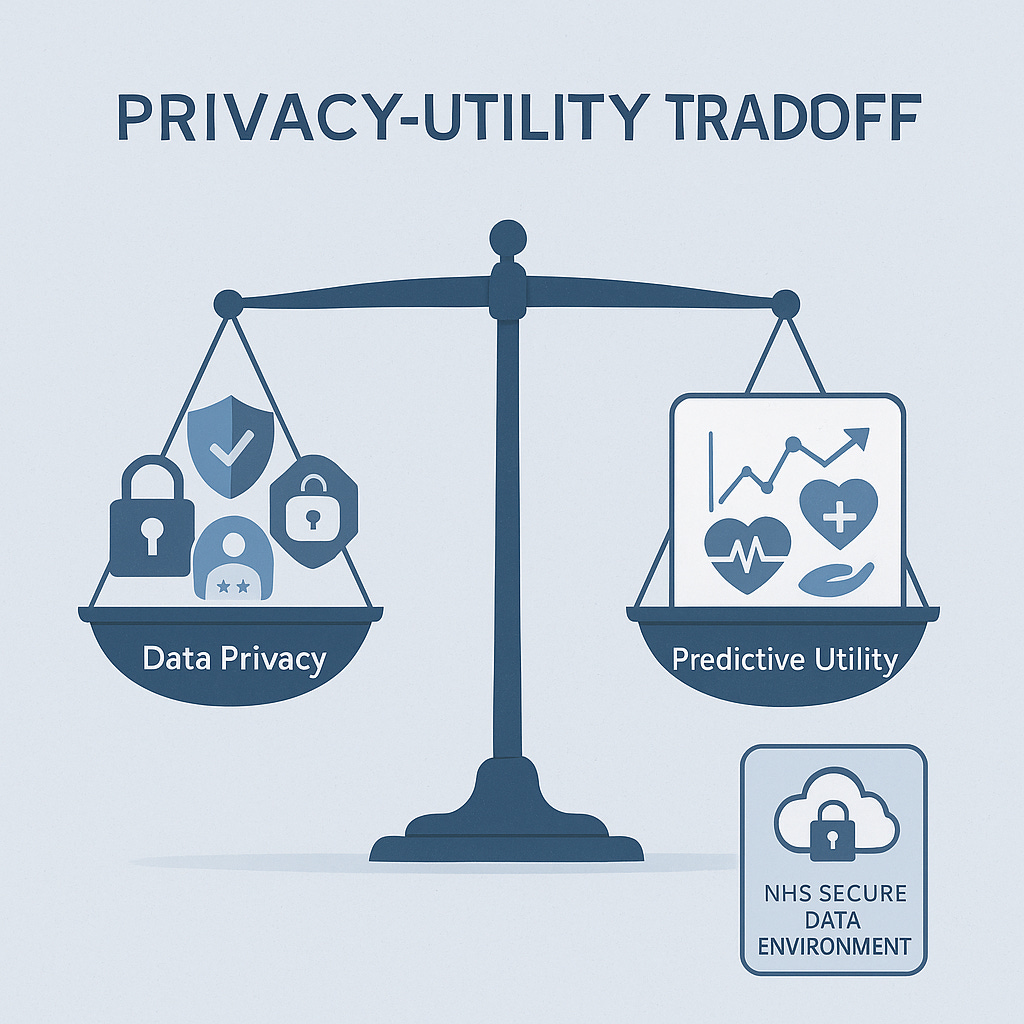Foresight AI: The UK's Bold Gamble on Predictive Healthcare
When a Nation Becomes the Dataset: Inside the World's Most Ambitious Health AI Experiment
The 57-Million Patient Experiment
In an era where most organizations are still figuring out how to implement AI effectively, the UK's National Health Service has made a breathtaking leap. Imagine training an AI model not on thousands of records, not on millions, but on the health data of nearly an entire nation—57 million patients, representing almost the complete population of England. Read the article.
The scale: 10 billion medical events across 57 million patients spanning 2018-2023, including GP visits, hospital admissions, outpatient appointments, vaccination records, and even death registry entries.
This groundbreaking initiative, named "Foresight," stands apart from typical healthcare AI projects that target narrow applications like radiology image analysis or specific disease risk assessment. Foresight aims to predict over 1,000 different disease diagnoses and critical health events like heart attacks and hospitalizations.
This isn't just another AI project; it's the first time a generative AI has been deployed on an entire country's health system.
The Big Shift: From Reactive to Proactive Healthcare
What makes Foresight truly revolutionary is its fundamental reimagining of healthcare delivery:
Identifying at-risk patients before conditions worsen
Enabling targeted interventions before emergencies occur
Optimizing resource allocation based on predicted needs
Revealing healthcare gaps in underserved communities
The Great Data Dilemma: Privacy vs. Potential
Perhaps no aspect of Foresight offers more relevant lessons for business leaders than its handling of the privacy-utility tradeoff. This is the central tension in almost every data innovation initiative: the same detailed data that enables powerful insights also creates greater privacy risks.
The data was "de-identified but not fully anonymous," meaning obvious identifiers like names, addresses, and birth dates were removed or pseudonymized. The data was then analyzed within the secure confines of the NHS England Secure Data Environment (SDE), a platform where researchers can work with sensitive data without it leaving the controlled enclave.
This approach—creating a secure sandbox for sensitive data rather than distributing it widely—offers a template for responsible data use that many businesses would be wise to adopt.
"The very richness of data that makes it valuable for AI also makes it incredibly hard to anonymize completely." — Dr. Luc Rocher, Oxford Internet Institute
This honesty about the limits of de-identification is refreshing in a world where many data initiatives make overly confident claims about anonymization.
Governance as Innovation: The Unsung Hero
In discussions of AI, we often focus on algorithms and data while treating governance as an afterthought. Foresight flips this script, making governance innovation as central as technical innovation.
Three Pillars of Foresight's Governance:
Technical Safeguards
NHS England Secure Data Environment (SDE)
Audit trails for all data access
Controlled data release protocols
Oversight Bodies
British Heart Foundation Data Science Centre
Health Data Research UK
NHS England data governance committees
Stakeholder Representation
Public contributors involved in research approval
Patient representatives providing ongoing guidance
Clinician input on implementation
"It's important that people know how their health data is being used, so it's encouraging to see a focus on transparency and making sure AI is used in the NHS in a safe, ethical way with public benefit at its heart." — Public contributor involved in Foresight oversight
This approach—combining technical safeguards with human oversight and stakeholder representation—offers a blueprint for responsible AI governance that many organizations could adapt. The most advanced companies in AI are increasingly recognizing that governance isn't a bureaucratic impediment but a critical enabler of sustainable innovation.
From Prediction to Action: The Implementation Gap
The most sophisticated predictive model adds zero value if it doesn't change decisions or actions. This reality confronts every AI implementation, and Foresight is no exception.
"Improved prediction alone will not drive better health without investment in interventions and care delivery changes." — Prof. Peter Bannister
These use cases require careful workflow design: delivering the right prediction to the right person at the right time, and ensuring they understand and trust it. There is a risk of "alert fatigue" if the model over-predicts events that don't happen, and conversely a risk of missed opportunities if it under-predicts.
The Implementation Challenge:
This highlights what I've observed in countless AI implementations: the technical model is often the easiest part. The harder challenges involve:
Workflow integration
Change management
Training and education
Organizational alignment
Performance monitoring
Organizations that treat AI as purely a technical problem invariably struggle with actual value realization. Those that approach it as a socio-technical system—addressing the human and organizational dimensions alongside the algorithmic—are far more likely to succeed.
Generative Foresight: The Path Forward
What sets Foresight apart is its ability to simulate multiple health trajectories—not just predicting risks but visualizing alternative futures based on different interventions. This transformative approach could revolutionize preventative care across sectors, provided organizations follow key principles: scale governance alongside technology, navigate legal boundaries, treat trust as capital, start focused before expanding, and thoughtfully balance collective benefits with individual privacy protections.
Beyond prediction: Foresight doesn't just forecast problems—it helps explore solutions by generating alternative futures based on different intervention strategies.
The UK has taken a pretty bold step toward a future where AI helps us not just respond to problems, but anticipate and prevent them. Foresight offers both inspiration and a roadmap, demonstrating that with careful planning, proper governance, and thoughtful implementation, AI can indeed help us move from hindsight to genuine foresight.
Resources
Medical AI trained on 57 million health records • Nature, May 2025
The original coverage of the UK's Foresight AI initiative.
NHS England Secure Data Environment • NHS Digital
Technical framework for secure patient data research.
The Ethics of Opt-Out Data Models • BMJ
Ethical considerations for healthcare data usage without explicit consent.
Generative AI in Clinical Decision Support • Lancet Digital Health
How generative AI improves clinical decision-making through scenario simulation.
Building Responsible AI Governance • Ada Lovelace Institute
Creating effective governance for large-scale AI deployments.




